This article was co-authored by Trudi Griffin, LPC, MS. Trudi Griffin is a Licensed Professional Counselor in Wisconsin specializing in Addictions and Mental Health. She provides therapy to people who struggle with addictions, mental health, and trauma in community health settings and private practice. She received her MS in Clinical Mental Health Counseling from Marquette University in 2011.
There are 17 references cited in this article, which can be found at the bottom of the page.
This article has been viewed 43,050 times.
Approximately 5% of the U.S. population suffers from agoraphobia, an anxiety disorder which in Greek translates to "fear of the marketplace.” It is best thought of as the fear of fear, or the fear of having a panic attack in a public place. Agoraphobia is twice as prevalent in women than in men and is marked by an intense anxiety during encounters in public, while socializing, or in unfamiliar settings. [1] Identifying whether or not you have agoraphobia is the first step toward finding a solution.
Steps
Identifying Public Behavior Associated with Agoraphobia
-
1Pay attention to your need for company when out in public. People who have agoraphobia often require assistance when traveling to a new place because they are afraid to go out alone. People who have agoraphobia often have a difficult time doing things independently and are comforted by the presence of a friend or partner.[2]
- If the thought of going to the grocery store for a gallon of milk makes you feel anxious, you may suffer from agoraphobia.
-
2Consider whether you have established a fixed route. People who have agoraphobia may fear going to places that might not be free of anxiety-inducing triggers. Someone who has agoraphobia may create a “safe” pattern of movement to travel each day, such as to and from work.[3]
- If you’ve noticed that you exclusively take one way home each day and stick to the exact same roads, walkways, and footpaths because you’re afraid to try new ones, you may be experiencing agoraphobia.
Advertisement -
3Keep an eye out for a decline in your social life. People who have agoraphobia often limit the places they will go to reduce the chance of encountering something that might trigger a panic attack. People who have agoraphobia may feel uncomfortable with meeting new people and try to limit themselves to “safety zones,” such as home or work. If you have agoraphobia, then you may notice that your social life feels limited.[4]
- Perhaps, before you developed agoraphobia, you went out with friends to the bar, parties, and cinema in addition to work and school. As time went on perhaps you began to worry more about having a panic attack, and you stopped going to parties. Then, when the semester ended, you didn’t enroll in school again for fear you’d have a panic attack in class. You now see your friends less often and spend as little time as possible at work. These kinds of behaviors may indicate that you have agoraphobia.
-
4Identify if you feel fear or anxiety when you are in a large crowd. Do you feel a shortness of breath when in a crowd of people at the mall, at a concert, or at the market? You may have agoraphobia if even thinking about large crowds of people creates symptoms of anxiety like sweaty palms, excessive worrying, a racing heartbeat, and disjointed thoughts. [5]
- Even if you don't actually experience a panic attack, fear of having an attack in a social situation can also be a symptom of agoraphobia.
-
5Stay conscious of fear or anxiety in a confined space. Panic symptoms related to agoraphobia may strike when you feel like you cannot escape. Examine your feelings when you are in confined spaces. Passing through tunnels in a car or train, riding in elevators, buses, planes, and trains may trigger panic symptoms or a panic attack.[6]
-
6Think about situations in which you made an excuse to escape. It is common for people with agoraphobia to fear not being able to escape a place or situation.[7] However, you might experience shame or embarrassment when you have to make an excuse to escape a situation. In order to conceal your fear, you might find yourself lying about why you suddenly need to leave a certain situation or event.[8]
- For instance, perhaps you experience an agoraphobic episode when you’re at a baseball game with a friend. Instead of expressing that you feel anxious in the large crowd, you might tell your friend you need to go home to let your dog out. In addition to such excuses, you might fake illness to escape an uncomfortable situation.
Identifying Personal Symptoms of Agoraphobia
-
1Watch for persistent anxiety. The main feature of agoraphobia is feeling anxiety about situations and places that you fear you may not be able to escape. When you are in these situations (most often outside of your home) you may experience a sense of dread, as if something terrible is about to happen. You must have had these feelings for a minimum of six months to receive a diagnosis of agoraphobia.[9]
- Some people also experience panic symptoms or panic attacks in situations that trigger anxiety. During a panic attack, one may experience a combination of chest pain, numbness, dizziness, trembling, sweating, shortness of breath, nausea, feeling unreal or disconnected from oneself, feeling like you are losing control or going crazy, feeling like you are dying, or feeling chilled or hot.[10]
-
2Identify the situations that make you feel fearful. The types of fear that someone who has agoraphobia experiences are quite specific. To be diagnosed with agoraphobia, the DSM-V indicates that the patient must experience fear in two or more of the following situations:[11]
- being in a large crowd or waiting in a line
- being in an open space, such as a marketplace or parking lot
- being in a closed space, such as a coffee shop or movie theater
- using public transportation, such as the bus, train, plane, or a ferry
- going outside of your home alone
-
3Recognize when you fear being alone. If you dislike being alone because you might panic and experience the shortness of breath, racing heartbeat, and confused thoughts that happen during an agoraphobic attack, then you might have agoraphobia. Make note of any heightened feelings of fear that you experience when you are alone.[12]
- There are two kinds of fears that may emerge when people are alone. One kind is related to agoraphobia. The other kind of fear is one that develops because the person is alone and feels vulnerable to attack from predators. This is not symptomatic of agoraphobia. Correctly identifying one’s own feelings is important to identifying whether they have agoraphobia.[13]
-
4Consider your risk factors for agoraphobia. Women and those who are under the age of 35 are at a higher risk of developing agoraphobia. Other risk factors for agoraphobia include:[14]
- having another disorder, such as panic disorder or another type of phobia
- feeling nervous or anxious much of the time
- going through something stressful, such a losing a parent, being attacked, or being abused
- having a family history of agoraphobia (such as a blood relative)
- having depression
- having a substance abuse problem
Getting Help for Agoraphobia
-
1Ask your doctor about medication. Agoraphobia should not be treated with medication alone, but combining medication with therapy can help. Common medications used to treat agoraphobia include:[15]
- Antidepressants. Selective serotonin reuptake inhibitor (SSRI) antidepressants, such as paroxetine and fluoxetine, may help if you have panic attacks along with your agoraphobia. Other options include tricyclic antidepressants and MAOI inhibitors.
- Anti-anxiety medications. Medications such as benzodiazepines can produce a sense of calm in short amount of tie, but these medications can be addictive. Therefore, it is best to limit your use of these medications to emergency situations, such as during a panic attack.
-
2Attend therapy. Cognitive behavioral therapy (CBT) is the most effective form of treatment for agoraphobia. The technique mixes cognitive therapy (which emphasizes that certain ways of thinking lead to certain mental illnesses) with behavioral therapy (which emphasizes the ability of the individual to change behaviors which are harmful to them.[16] [17]
- An effective CBT regimen will occur over several weeks in sessions of about 50 minutes each. Your counselor will talk you through your experience of agoraphobia in a given week and you will be asked to analyze your patterns of mind and action.
- Eventually, you will be asked to expose yourself to progressively more challenging levels of social engagement in order to banish the feelings and thoughts your agoraphobia inspires. First you might go to the market for 15 minutes, then 30 minutes, then an hour, and so on until you’ve been properly re-acclimated to social situations.
-
3Retrain your mind. Agoraphobia is the result of your brain telling you something that isn’t true: “You’re trapped,” “You are unsafe here,” or “You should not trust anyone.” By modifying and actively rejecting your misconceptions, you can learn to cope with agoraphobia. The first step toward retraining is to recognize that your mind is disordered, and that the thoughts or signals you’re receiving are false.[18]
- For instance, when your brain tells you to freak out because there’s danger nearby, gather additional information. Think about prior panic attacks you’ve had and remember that you survived and endured them without permanent injury or death (a common fear among people who have agoraphobia).
-
4Use non-avoidant coping strategies. Non-avoidant coping strategies (exposure) force you to confront situations which feel threatening. In order to become fear-free in situations that currently give you anxiety, you’ll need to experience these situations firsthand. Only after passing through the flame of fear can you emerge, Phoenix-like, refreshed and mentally whole.[19]
- For instance, if you feel or fear a wave of panic coming on when you go to a baseball game, try going to a local little league or minor league game for about 15 to 20 minutes. Ramp it up progressively, attending the next game for 30 to 40 minutes, then 60 to 70 minutes and so on. Eventually, transition into going to a major league game for a few innings, then
- Be honest with yourself about your comfort level. Your goal should not be to induce an agoraphobic panic attack, but to identify the trigger that brings the attacks on without actually having one. Don't rush the process by exposing yourself to too great a trigger too soon. Pace yourself and keep a journal of how you feel after each exposure in order to gauge your progress.
Warnings
- See a mental health professional if you think you may suffer from this anxiety disorder.⧼thumbs_response⧽
References
- ↑ https://my.clevelandclinic.org/health/diseases/15769-agoraphobia
- ↑ http://www.nhs.uk/conditions/agoraphobia/Pages/Symptoms.aspx
- ↑ https://adaa.org/understanding-anxiety/agoraphobia
- ↑ https://www.betterhealth.vic.gov.au/health/conditionsandtreatments/agoraphobia
- ↑ https://www.nlm.nih.gov/medlineplus/ency/article/000923.htm
- ↑ https://www.nlm.nih.gov/medlineplus/ency/article/000923.htm
- ↑ https://childmind.org/article/agoraphobia-in-children/
- ↑ https://www.psychologytoday.com/blog/fighting-fear/201305/cure-panic-disorder-and-agoraphobia
- ↑ https://www.ncbi.nlm.nih.gov/books/NBK554387/
- ↑ http://psychcentral.com/disorders/panic-attack-symptoms/
- ↑ https://www.ncbi.nlm.nih.gov/books/NBK519704/table/ch3.t10/
- ↑ https://www.aagponline.org/index.php?src=gendocs&ref=anxiety
- ↑ https://www.nature.com/articles/s41598-019-47684-6
- ↑ https://my.clevelandclinic.org/health/diseases/15769-agoraphobia
- ↑ https://www2.hse.ie/conditions/mental-health/agoraphobia/agoraphobia-treatment.html
- ↑ http://patient.info/health/agoraphobia-leaflet
- ↑ https://www.ncbi.nlm.nih.gov/books/NBK532188/table/ch8.tab6/?report=objectonly
- ↑ https://www.opencolleges.edu.au/blog/2016/09/05/mhm-managing-agoraphobia-in-your-everyday-life/
- ↑ https://www.ncbi.nlm.nih.gov/pmc/articles/PMC3327306/
About This Article
If you think you might be agoraphobic, ask yourself if you suffer anxiety when out in public alone, which is a symptom many people with agoraphobia feel. In large crowds and busy environments, you may also experience anxiety and fear if you have agoraphobia. When you’re in enclosed spaces, like a bus or elevator, you might feel a little uncomfortable or trapped. You should also consider the quality of your social life, since many people with agoraphobia find it hard to socialize in new environments. If you think you may have agoraphobia, ask your doctor for help. You can also ask a friend to help you arrange the visit if you don't feel comfortable enough on your own. For more tips from our Counselor co-author, including how to stay calm when you experience anxiety in public, read on!



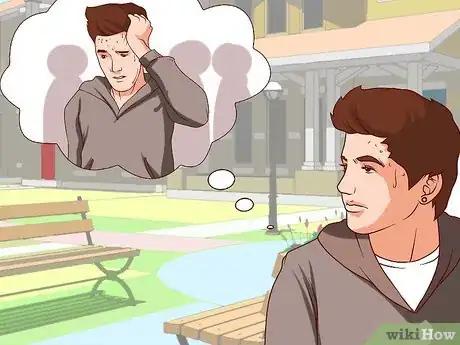
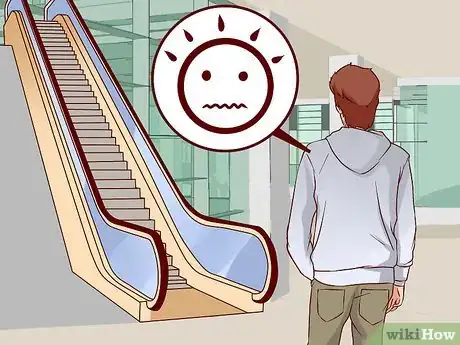

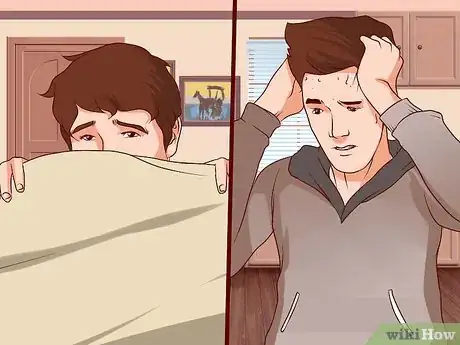

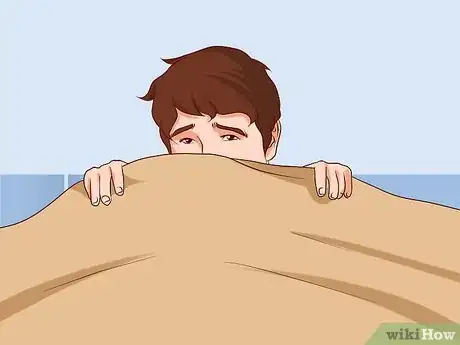
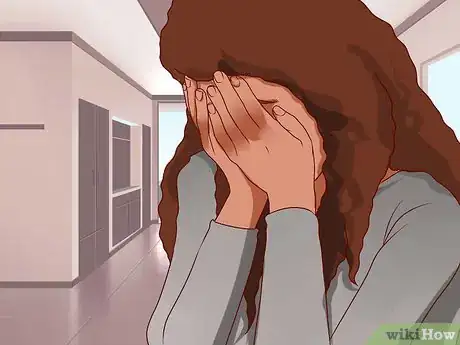
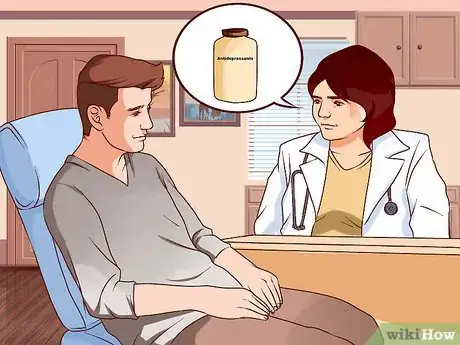
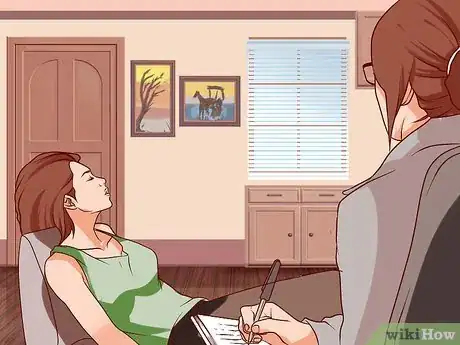
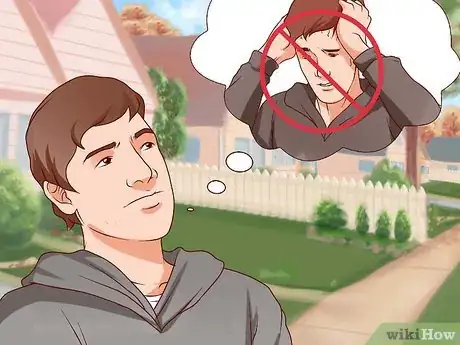








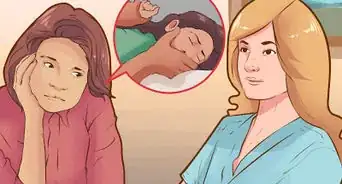















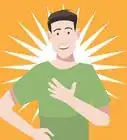




































Medical Disclaimer
The content of this article is not intended to be a substitute for professional medical advice, examination, diagnosis, or treatment. You should always contact your doctor or other qualified healthcare professional before starting, changing, or stopping any kind of health treatment.
Read More...